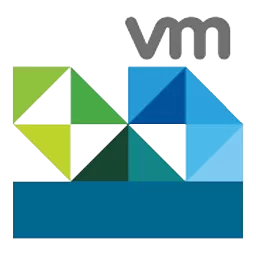Run any virtual machine. Run virtual machines created by VMware Workstation, GSX Server or ESX Server. VMware Player also supports Microsoft virtual machines and Symantec LiveState Recovery disk formats.
What are the different editions of VMware Workstation?
The VMware Workstation product line consists of two products: Workstation Pro and Workstation Player. Collectively they are referred to as 'VMware Workstation,' and when there are differences, they are called out.
What are the differences between Workstation Pro and Workstation Player?
Workstation Pro and Workstation Player share the same hypervisor technology, but with unique user interfaces for different types of use.
Workstation Player is designed for a single graphical VM operation, or for command line operation with 'vmrun' or ' for running a different operating system in a secure isolated sandbox on a PC.
Workstation Pro is designed for IT professionals and developers, providing a more fully featured interface with capabilities for running multiple virtual machines at the same time. Workstation Pro can provide and configure virtual networking, create clones, connect to vSphere, show multiple VMs at the same time in a tabbed UI and more.
Do I need to dual boot or repartition the disk?
No, VMware Workstation uses your computer's file system and creates files that map to a virtual machine's disk drives, so there is no need to create a partition for each operating system. If you already have another OS with dual boot installed on your computer, you can use VMware Workstation to run the other OS in a virtual machine on your host operating system.
Instead of dual booting, you can run both operating systems simultaneously and seamlessly switch from one operating system to another with a click of your mouse.
Features
- Access host PC devices. Use host CD/DVD drives, network adapters, and plug-and-play USB devices.
- Copy and paste. Copy text and files between the virtual machine and the host PC.
- Drag and drop. Drag and drop files between a Windows host PC and a Windows virtual machine.
- Multiple networking options. Virtual machines can share or obtain new IP addresses or be isolated from the network and host.
- 32- and 64-bit host and guest operating system support. Run a wide variety of virtual machines containing 32- and 64-bit operating systems simultaneously on the same physical PC. Compatible 64-bit guest operating systems include select Microsoft Windows, Red Hat, SUSE, and FreeBSD distributions.
- Adjustable memory. Tune virtual machine memory for optimal performance.
- Configurable shutdown. Power down or suspend the virtual machine when closing VMware Player.
- Integrated Google Search. VMware Player includes Google search capabilities, fully integrated for conveniently searching the web without launching a browser.
What's New
- This release introduces product enhancements to support a new commercial subscription and personal use license model. For more information, see Learn Subscription.
- This release resolves CVE-2024-22267, CVE-2024-22268, CVE-2024-22269, and CVE-2024-22270. For more information on these vulnerabilities and their impact on VMware products, see VMSA-2024-0010.
- This release contains security and bug fixes.
Product Support Notices
- Workstation Pro and Fusion Pro are now available free for personal use. By default, each product is licensed only for Personal Use. A license key for personal use is no longer required.
- Workstation Pro and Fusion Pro require a commercial subscription and associated license key for use in any commercial setting.
- Commercial subscriptions for both Fusion Pro and Workstation Pro are now offered through a single Desktop Hypervisor Pro product SKU.
Known Issues
- The multi-monitor feature might not work correctly in specific topologies
- In specific situations, based on different hardware and topologies, the multi-monitor feature does not work as expected. You might see issues like reverting the topology to a single screen, or not cycling through monitors.
- Workaround: None.
Resolved Issues
- VMware NAT Service uses high CPU even with no virtual machine running
- On Workstation Pro 17.5.0 and 17.5.1, vmnat.exe might have high CPU utilization even when no virtual machine is running.
- This issue is resolved.
Security Issues
- OpenSSL, which is consumed by OVF Tool, is updated to version 1.0.2zj.

